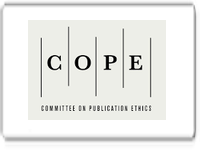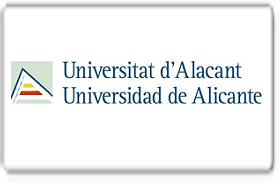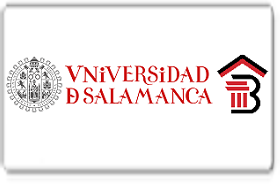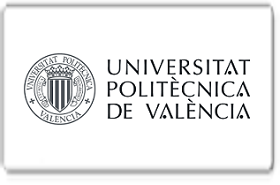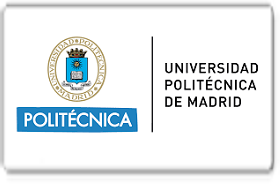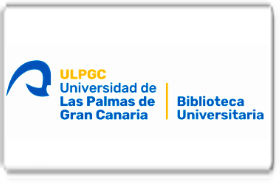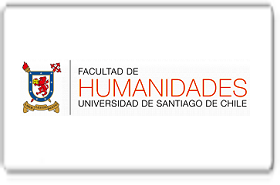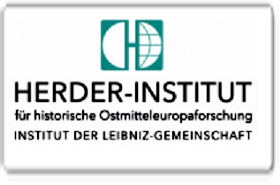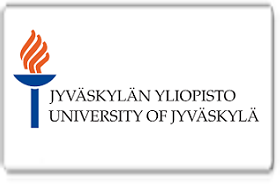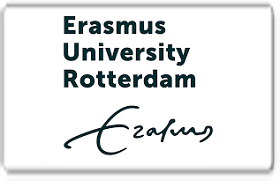Obtención de extracto funcional de bagazo de malta para su aplicación en la industria alimenticia y no alimenticia
DOI:
https://doi.org/10.56048/MQR20225.8.2.2024.4082-4100Palabras clave:
Aplicación; Bagazo; Componentes; Extracto; Industrias; ResiduosResumen
En el Ecuador se producen aproximadamente 120.000 toneladas anuales de bagazo cervecero. Estos residuos al ser una gran problemática y tener un alto impacto ambiental ha llevado a que se busquen nuevas formas de minimizarlos y aprovecharlos, los componentes principales del bagazo de malta son ricos en polisacáridos celulósicos, no celulósicos y lignina, y pueden contener algo de proteína y lípido. El objetivo de este trabajo es obtener un extracto funcional bajo protocolo de capacidad fenólicas (FOLIN) y capacidades antioxidantes (DPPH; ABTS), del bagazo de malta para su aplicación en la industria alimenticia y no alimenticia. La explicación podría encontrarse en la diferente preparación del extracto y el uso de diferentes disolventes. En el caso de los resultados citados por los diferentes autores, utilizaron hidróxido de sodio y etanol en diferentes concentraciones y en nuestro trabajo utilizamos etanol al 96% para la obtención del extracto de bagazo de malta negra, por eso se observan variaciones en los resultados obtenidos, tanto en la concentración del extracto y en la capacidad fenólica (FOLIN) y antioxidantes (DDPH; ABTS). La capacidad antioxidante del extracto de bagazo de malta se la realizo con el fin de evaluar la importancia que tienen estos métodos (DPPH; ABTS) determinan su valor nutricional y el uso eficiente de este subproducto y su capacidad fenólica (FOLIN), determina su capacidad antioxidante natural y evalúa su potencial de aplicación en diversas industrias. Su aplicación permite maximizar su aprovechamiento y garantizar la salud y rendimiento de los que los consumen.
Descargas
Métricas
Cited
DOI: 10.56048![]()
Citas
Ainsworth, P., Ibanoǧlu, Ş., Plunkett, A., Ibanoǧlu, E., & Stojceska, V. (2007). Effect of brewers spent grain addition and screw speed on the selected physical and nutritional properties of an extruded snack. Journal of Food Engineering, 81(4), 702–709. https://doi.org/10.1016/J.JFOODENG.2007.01.004
Aquilani, B., Laureti, T., Poponi, S., & Secondi, L. (2015). Beer choice and consumption determinants when craft beers are tasted: An exploratory study of consumer preferences. Food Quality and Preference, 41, 214–224. https://doi.org/10.1016/J.FOODQUAL.2014.12.005
Aron, P. M., & Shellhammer, T. H. (2010). A discussion of polyphenols in beer physical and flavour stability. Journal of the Institute of Brewing, 116(4), 369–380. https://doi.org/10.1002/J.2050-0416.2010.TB00788.X
Balli, D., Bellumori, M., Orlandini, S., Cecchi, L., Mani, E., Pieraccini, G., Mulinacci, N., & Innocenti, M. (2020). Optimized hydrolytic methods by response surface methodology to accurately estimate the phenols in cereal by HPLC-DAD: The case of millet. Food Chemistry, 303. https://doi.org/10.1016/J.FOODCHEM.2019.125393
Barberán Torres, L. O., & Gorozabel Muñoz, W. A. (2022). Caracterización química de los residuos sólidos procedentes de la elaboración de tres tipos de cerveza artesanal (stout - negra, imperial - rubia, guayacán - roja). La Técnica, ISSN 1390-6895, ISSN-e 2477-8982, Vol. 12, No. 1, 2022 (Ejemplar Dedicado a: Enero-Junio), Págs. 38-44, 12(1), 38–44. https://doi.org/10.33936/la_tecnica.v0i27.3624
Barbosa-Pereira, L., Bilbao, A., Vilches, P., Angulo, I., Lluis, J., Fité, B., Paseiro-Losada, P., & Cruz, J. M. (2014). Brewery waste as a potential source of phenolic compounds: Optimisation of the extraction process and evaluation of antioxidant and antimicrobial activities. Food Chemistry, 145, 191–197. https://doi.org/10.1016/J.FOODCHEM.2013.08.033
Dragone, G., Inês Mussatto, João Batista de Almeida Silva, & Solange. (2005). Levaduras Inmovilizadas en Soporte Lignocelulósico para la Producción Continua De Cerveza Immobilized Yeast on Lignocellulosic Carrier for Continuous Beer Production. Braz. J. Food Technol., 5o SIPAL. https://bjft.ital.sp.gov.br/especiais/ed_especial/13.pdf
Fărcaş, A. , Tofană, M. , Socaci, S. , Mudura, E. , Scrob, S. , Salanţă, L., & Mureşan, V. (2014). Brewers’ spent grain-A new potential ingredient for functional foods. Journal of Agroalimentary Processes and Technologies, 20(2), 137–141. https://journal-of-agroalimentary.ro/admin/articole/20623L21_Vol_20(2)_2014_137_141.pdf
Flander, L., Salmenkallio-Marttila, M., Suortti, T., & Autio, K. (2007). Optimization of ingredients and baking process for improved wholemeal oat bread quality. LWT - Food Science and Technology, 40(5), 860–870. https://doi.org/10.1016/J.LWT.2006.05.004
Garavaglia, C., & Swinnen, J. (2017). The Craft Beer Revolution: An International Perspective. CHOICES, 32(3).
García Martínez, E. M., Fernández Segovia, I., & Fuentes López, A. (2015). Determinación de polifenoles totales por el método de Folin-Ciocalteu. https://riunet.upv.es/handle/10251/52056
Giovenzana, V., Beghi, R., & Guidetti, R. (2014). Rapid evaluation of craft beer quality during fermentation process by vis/NIR spectroscopy. Journal of Food Engineering, 142, 80–86. https://doi.org/10.1016/J.JFOODENG.2014.06.017
Grande, S. M. M., Fernández, M. M., Argañaraz Martínez, F. E., & Perez Chaia, A. B. (2022). Capacidad antioxidante de productos cerveceros con distinto nivel de tostado. VII Congreso Internacional Ciencia y Tecnología de Los Alimentos: Libro de Resúmenes. https://ri.conicet.gov.ar/handle/11336/174535
Huerta Zurita, M., Díaz, Z., Hernández, S., Cano, L., & Laura, M. (2014). Friabilidad de malta y predicción de calidad en el mejoramiento genetico de cebada maltera (Hordeum vulgare L.). Revista Mexicana de Ciencias Agrícolas, 5(4), 577–590. https://www.redalyc.org/articulo.oa?id=263130476004
Julián David Ortiz Guerra. (2023). Propiedades tecno-funcionales del bagazo de malta (BSG) obtenido del proceso de elaboración de cerveza. Unilasallista Corporación Universitaria Caldas - Antioquia. http://repository.unilasallista.edu.co/dspace/bitstream/10567/3577/1/1128405032.pdf
Jurado Morales, M. A. (2017). Fraccionamiento del bagazo cervecero bajo el concepto de biorrefinería. http://repositorio.puce.edu.ec:80/handle/22000/14162
Kanauchi, O., Mitsuyama, K., & Araki, Y. (2001). Development of a functional germinated barley foodstuff from brewer’s spent grain for the treatment of ulcerative colitis. Journal of the American Society of Brewing Chemists, 59(2), 59–62. https://doi.org/10.1094/ASBCJ-59-0059
Kitryte, V., Šaduikis, A., & Venskutonis, P. R. (2015). Assessment of antioxidant capacity of brewer’s spent grain and its supercritical carbon dioxide extract as sources of valuable dietary ingredients. Journal of Food Engineering, 167, 18–24. https://doi.org/10.1016/J.JFOODENG.2014.12.005
Ktenioudaki, A., Chaurin, V., Reis, S. F., & Gallagher, E. (2012). Brewer’s spent grain as a functional ingredient for breadsticks. International Journal of Food Science and Technology, 47(8), 1765–1771. https://doi.org/10.1111/J.1365-2621.2012.03032.X
Lattimer, J. M., & Haub, M. D. (2010). Effects of Dietary Fiber and Its Components on Metabolic Health. Nutrients, 2(12), 1266. https://doi.org/10.3390/NU2121266
Maillard, M. N., Soum, M. H., Boivin, P., & Berset, C. (1996). Antioxidant Activity of Barley and Malt: Relationship with Phenolic Content. LWT - Food Science and Technology, 29(3), 238–244. https://doi.org/10.1006/FSTL.1996.0035
Maritza Elizabeth Naspud Rojas. (2018). Determinación de la Capacidad Antioxidante de los Extractos Alcohólicos del Fruto de Mora (Rubus Glaucus Benth) Obtenidos con Tres Pretratamientos Térmicos. Universidad Politécnica Salesiana Sede Cuenca. https://dspace.ups.edu.ec/bitstream/123456789/16411/1/UPS-CT007983.pdf
Martín García Paz. (2017). Los Residuos de Cerveza como Fuente de Antioxidantes Naturales. Universitat Politécnica de Catalunya Barcelonatech. https://upcommons.upc.edu/bitstream/handle/2117/115468/Los%20residuos%20de%20cerveza%20como%20fuente%20de%20antioxidantes%20naturales.pdf
Monteiro, C. C. F., Malavazi, B., Mendes, M. P., Berwig, K. P., Raniero, G. Z., Monteiro, A. R. G., Paschoarelli, L. C., & Clifford, M. (2019). Biomaterial Based on Brewing Waste and Vegetable Resin: Characterization and Application in Product Design. Chemical Engineering Transactions, 75, 475–480. https://doi.org/10.3303/CET1975080
Moreira, M. M., Morais, S., Barros, A. A., Delerue-Matos, C., & Guido, L. F. (2012). A novel application of microwave-assisted extraction of polyphenols from brewer’s spent grain with HPLC-DAD-MS analysis. Analytical and Bioanalytical Chemistry, 403(4), 1019–1029. https://doi.org/10.1007/S00216-011-5703-Y
Moreira, M. M., Morais, S., Carvalho, D. O., Barros, A. A., Delerue-Matos, C., & Guido, L. F. (2013). Brewer’s spent grain from different types of malt: Evaluation of the antioxidant activity and identification of the major phenolic compounds. Food Research International, 54(1), 382–388. https://doi.org/10.1016/J.FOODRES.2013.07.023
Mussatto, S. I., Dragone, G., & Roberto, I. C. (2006). Brewers’ spent grain: Generation, characteristics and potential applications. Journal of Cereal Science, 43(1), 1–14. https://doi.org/10.1016/J.JCS.2005.06.001
Nick J. Huige. (2006). Brewery By-Products and Effluents. Handbook of Brewing, 670–729. https://doi.org/10.1201/9781420015171-22
Nigam, P. S. (2017). An overview: Recycling of solid barley waste generated as a by-product in distillery and brewery. Waste Management, 62, 255–261. https://doi.org/10.1016/J.WASMAN.2017.02.018
Panja, P. (2018). Green extraction methods of food polyphenols from vegetable materials. Current Opinion in Food Science, 23, 173–182. https://doi.org/10.1016/J.COFS.2017.11.012
Papagiannopoulos, M., Zimmermann, B., Mellenthin, A., Krappe, M., Maio, G., & Galensa, R. (2002). Online coupling of pressurized liquid extraction, solid-phase extraction and high-performance liquid chromatography for automated analysis of proanthocyanidins in malt. Journal of Chromatography. A, 958(1–2), 9–16. https://doi.org/10.1016/S0021-9673(02)00364-3
Peñarrieta, J. M., Alvarado, J. A., Åkesson, B., & Bergenståhl, B. (2008). Total antioxidant capacity and content of flavonoids and other phenolic compounds in canihua (Chenopodium pallidicaule): an Andean pseudocereal. Molecular Nutrition & Food Research, 52(6), 708–717. https://doi.org/10.1002/MNFR.200700189
Praveen, J., Paliwal, J., & Cenkowski, S. (2010). Issues with utilisation of brewers’ spent grain. Stewart Postharvest Review, 6(4), 1–8. https://doi.org/10.2212/SPR.2010.4.2
Ramos Nemocóm Andrés Felipe, & Talero Garzón Valentina. (2022). Análisis de los Compuestos Fenólicos Antioxidantes en Diferentes Bagazos de Cerveza Artesanal “Master Beer". FUNDACIÓN UNIVERSIDAD DE AMÉRICA - BOGOTÁ D.C. http://repository.uamerica.edu.co/bitstream/20.500.11839/9050/1/6171274-2022-2-IQ.pdf
Rioja Antezana Alejandra P, Vizaluque Beatriz E, Aliaga-Rossel, E., Tejeda, L., Book, O., Mollinedo, P., & Peñarrieta, J. M. (2018). Determinación de la Capacidad Antioxidante Total, Fenoles Totales, y la Actividad Enzimática en una Bebida no Láctea en Base a Granos de Chenopodium Quinoa. Revista Boliviana de Química, Vol. 35, Núm. 5, 2018, Noviembre-Diciembre, Pp. 168-176 Universidad Mayor de San Andrés Bolivia. https://www.researchgate.net/publication/343575085_Determinacion_de_la_capacidad_antioxidante_total_fenoles_totales_y_la_actividad_enzimatica_en_una_bebida_no_lactea_en_base_a_granos_de_chenopodium_quinoa
Rodríguez Sánchez, N., German Llona Cueva, G., Rodríguez Paucar, G., Zzussy Hurtado-Soria, B., Pineda Pérez, M., Miguel Huamán Zevallos, C., Ruth Pantoja Tirado, L., & Nacional Autónoma de Tayacaja Daniel Hernández Morillo, U. (2023). Capacidad antioxidante de la cerveza artesanal red ale con la adición de extracto de maíz morado (Zea mays L) y zumo de fruta de maracuyá (Passiflora edulis). Qantu Yachay, 3(2), 45–56. https://doi.org/10.54942/QANTUYACHAY.V3I2.58
Santiago David Jurado Poveda. (2018). Aprovechamiento del Bagazo de Malta de Cebada como Insumo en la Elaboración de una Barra de Cereales Alta en Fibra. Universidad Técnica Del Norte. Ibarra - Ecuador.
Santos, M., Jiménez, J. J., Bartolomé, B., Gómez-Cordovés, C., & Del Nozal, M. J. (2003). Variability of brewer’s spent grain within a brewery. Food Chemistry, 80(1), 17–21. https://doi.org/10.1016/S0308-8146(02)00229-7
Terán-Rivera, S. C., Del Mar Torres-Martínez, B., Ramón Torrescano-Urrutia, G., Esqueda, M., Sánchez-Escalante, A., David Vargas-Sánchez, R., Enrique, G., & Rosas, A. (2023). Residuos del procesamiento del fruto de café como fuente natural de antioxidantes para la industria cárnica. TIP Revista Especializada En Ciencias Químico-Biológicas, 26(0). https://doi.org/10.22201/FESZ.23958723E.2023.540
Vintimilla Gualán, M. G. (2013). Determinación de la actividad antioxidante de las fracciones lipofílicas e hidrofílicas de los subproductos agroindustriales de mango. http://dspace.utpl.edu.ec/jspui/handle/123456789/5752
Zerquera, O. L., Rodríguez, J. L., Margarita Hernández, A., & López, B. (1999). Caracterización química y funcional del afrecho de malta. Alimentaria: Revista de Tecnología e Higiene de Los Alimentos, ISSN 0300-5755, No 302, 1999, Págs. 105-108, 302, 105–108. https://dialnet.unirioja.es/servlet/articulo?codigo=133472
Zhu, F., Du, B., Zheng, L., & Li, J. (2015). Advance on the bioactivity and potential applications of dietary fibre from grape pomace. Food Chemistry, 186, 207–212. https://doi.org/10.1016/J.FOODCHEM.2014.07.057
Publicado
Cómo citar
Número
Sección
Categorías
Licencia

Esta obra está bajo una licencia internacional Creative Commons Atribución 4.0.
Los autores se comprometen a respetar la información académica de otros autores, y a ceder los derechos de autor a la Revista MQRInvestigar, para que el artículo pueda ser editado, publicado y distribuido. El contenido de los artículos científicos y de las publicaciones que aparecen en la revista es responsabilidad exclusiva de sus autores. La distribución de los artículos publicados se realiza bajo una licencia 


















